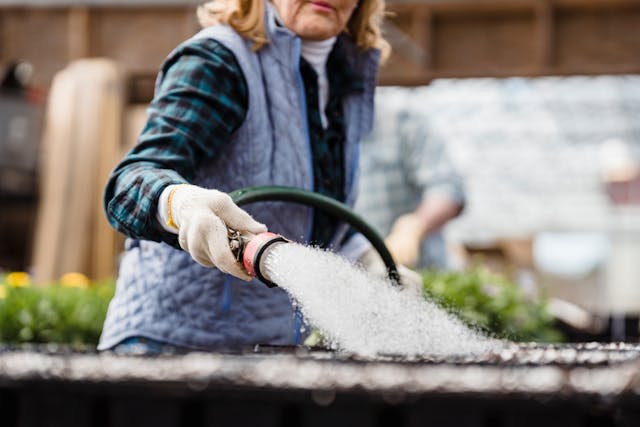- Deep watering is essential for maintaining optimal moisture levels and promoting healthy root growth in trees.
- Professional arborists have specialized training and equipment to properly care for trees, including identifying and treating diseases and pests and precise pruning techniques.
- Trees are an integral part of our environment, and our responsibility is to ensure their health for future generations.
- Regular tree care contributes to a greener, more sustainable planet and fosters a thriving community.
Our planet is graced with the presence of remarkable organisms that contribute to the very sustenance of life. Among these, trees stand as silent guardians of the natural world, not just for their majesty or ecological importance but for their vulnerability to the world they nurture. They’re the quiet heroes that absorb carbon, shelter diverse ecosystems, and gift us with the oxygen we breathe. Hence, understanding the vital importance of tree care becomes an obligation for any conscious inhabitant of this blue orb.
In this article, we explore the integral role of regular tree care in maintaining these green companions and why we, as stewards of the environment, should take action to ensure their well-being.
The Benefits of Healthy Trees
Trees are not just passive landscape features but dynamic contributors to our lives and environment. A healthy tree provides numerous benefits, such as:
- Enhancing air quality by trapping dust and other pollutants
- Offering shade and reducing the urban heat island effect
- Contributing to the overall beauty and atmosphere of a location
- Increasing property values
- Sustaining wildlife by providing shelter and food sources
Regular care ensures that these benefits are enjoyed to the fullest. It is an investment in the future for the environment and our quality of life.
Essential Tree Care Practices
When it comes to the care of your trees, implementing a few routine practices can go a long way. By weaving these into your seasonal maintenance, you’re not just ensuring a long, healthy life for your green companions but also preventing potential issues that may arise. Here are some essential tree care practices you should consider:
1. Tree Pruning
Pruning is akin to a haircut for trees—a necessary grooming process that enables healthier, more vigorous growth and removes potential hazards. Dead or diseased branches can be a source of infection to the rest of the tree and are best removed. Tree pruning services also aid in shaping the tree to avoid structural issues that could lead to property damage, particularly during storms.
Proper pruning involves cutting at the right angle and distance from the trunk. Over-pruning, or pruning at the wrong time, can stress a tree. It’s best to prune during the dormant season, as this minimizes the impact on the tree.
2. Soil Management
The health of a tree is as rooted in the ground as in its branches. Ensuring the soil around your trees is fertile, aerated, and retains moisture is crucial. Considerations such as mulching and fertilization help maintain optimal soil conditions.
- Mulching conserves moisture and provides a buffer from soil compaction from any foot traffic.
- Fertilization replenishes nutrients that are vital for the tree’s growth. However, it should be done carefully, in consultation with an expert if possible, to avoid over-fertilization, which can be just as harmful as under-fertilization.
3. Pest and Disease Management

Like all living organisms, trees are susceptible to pest infestations and diseases. Often, the signs are subtle and, left unchecked, can result in irreversible damage. Regular inspections can help identify these issues early for effective management.
Early signs of pest and disease issues include abnormal leaf color or dieback, pests, or fungal growth. Intervention may involve targeted treatments or, in severe cases, removing the tree to prevent spreading.
4. Watering and Irrigation

Water is the elixir of life, and trees, especially young ones, depend on the right amount of moisture to prosper. Too much or too little water can be detrimental. An efficient watering system or schedule based on the needs of different types of trees can help maintain the optimal moisture level.
Deep watering promotes profound, healthy root growth. It’s essential during dry spells or for trees that are not yet established. Drip irrigation or soaker hoses can distribute water slowly to the tree’s root zone, ensuring it is absorbed.
The Role of Professional Arborists in Tree Care
While there are many tree care tasks that the average homeowner can undertake, the expertise of a professional arborist can be invaluable. Arborists are specialists in cultivating and caring for trees and can offer tailored care based on the specific needs of each tree.
Arborists are trained to identify and treat various tree diseases and pests. They also have the equipment and knowledge to undertake meticulous pruning, particularly for more giant or more mature trees.
The Bottom Line
Our trees represent a timeless link to our past and an essential component of our future. By understanding the importance of regular tree care and taking proactive steps to ensure their health, we contribute to a greener, more sustainable planet.
We are but one part of the intricate web of life, and as such, it is our responsibility to ensure that our green giants stand tall and strong for generations to come. Make tree care a part of your environmental stewardship, and watch as your community flourishes with the vibrant life that healthy trees provide.




